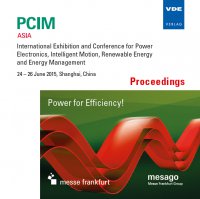Optimal Design of an Interleaved DC-DC Switch Mode Converter
Conference: PCIM Asia 2015 - International Exhibition and Conference for Power Electronics, Intelligent Motion, Renewable Energy and Energy Management
06/24/2015 - 06/26/2015 at Shanghai, China
Proceedings: PCIM Asia 2015
Pages: 7Language: englishTyp: PDF
Personal VDE Members are entitled to a 10% discount on this title
Authors:
Kumar, Prasanna C. (PES Institute of Technology, Bangalore, India)
Ramu, T. S. (Indian Institute of Science, Bangalore, India)
Abstract:
Boost converters help in meeting high DC voltage demands of many applications utilising low voltage renewable energy sources. The two phase interleaved power factor corrector, controlled by the average current mode control method is investigated. As is known, interleaving operation provides several advantages over the single Boundary Conduction Mode (BCM) Power Factor Correction (PFC). Modern AC/DC switchmode converters incorporate at least two cascaded stages. The first stage is an AC/DC conversion stage, interfacing the utility grid voltage with a compatible DC voltage level. The second stage is a DC/DC converter module to condition the DC output of first stage such that the performance requirements of the loads are satisfied. PFC techniques are widely utilized in the interleaved dual BCM PFC controllers suggested here, operate two parallel-connected boost power trains with a phase difference of 1800. Interleaving extends the maximum practical power level of the control technique from about 300W to greater than 800W. Unlike the continuous conduction mode (CCM) technique often used at higher power levels, BCM offers inherent zero current switching of the boost diodes. This permits the use of less expensive diodes without sacrificing efficiency. Authors of this contribution report a simulation experiment of proposed topology of a two stage interleaved converter with reduced inductor volume. It has been shown that the efficiency, size, and cost can be minimized. Possible extension to multistage topology is indicated power electronics.


